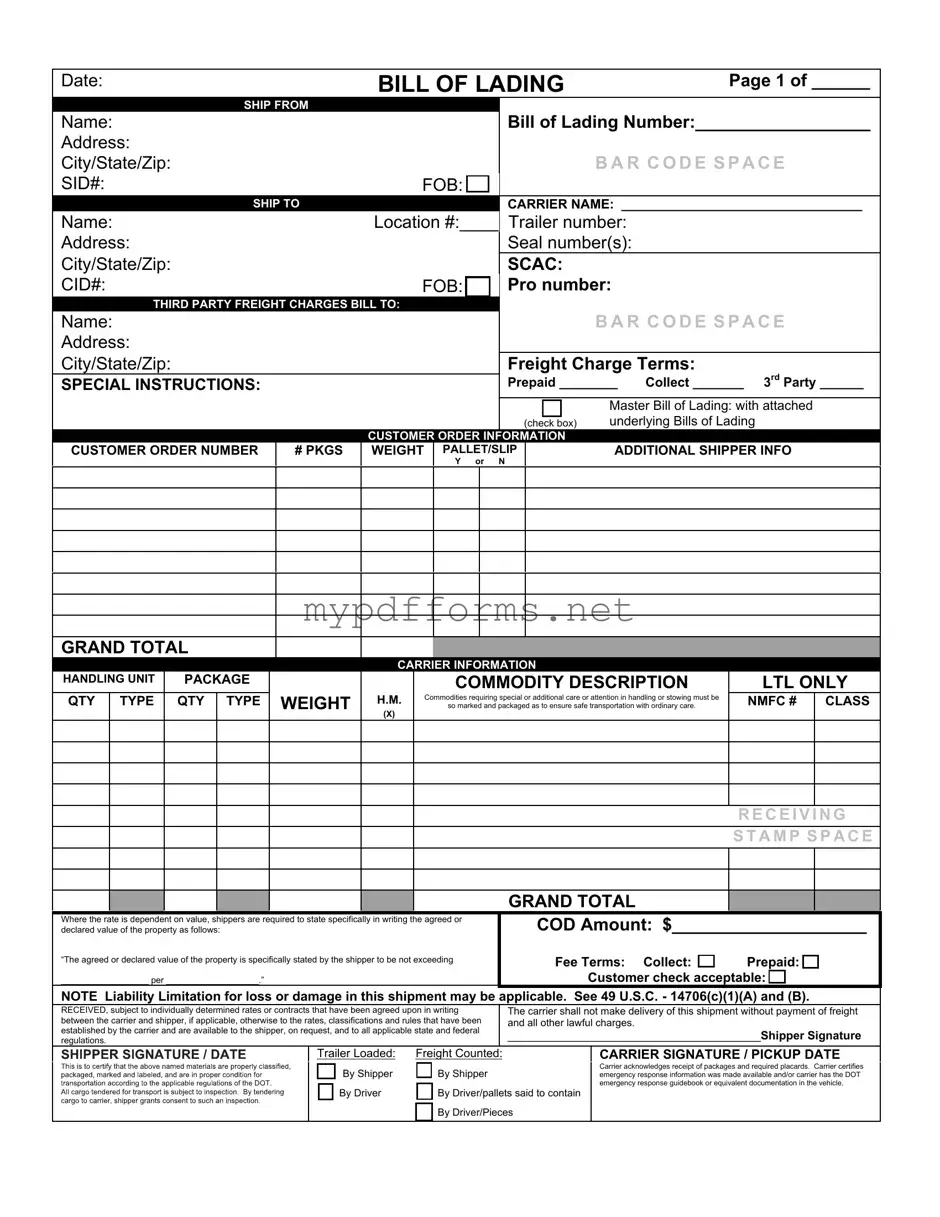Get Bill of Lading with a Supplement Form in PDF
The Bill of Lading with a Supplement form serves as a critical document in the shipping and freight industry, detailing the terms and conditions under which goods are transported. This form not only outlines the responsibilities of the carrier and the shipper but also provides essential information regarding the shipment itself. Understanding its components is vital for ensuring compliance and protecting the interests of all parties involved.
To get started with your shipping process, please fill out the form by clicking the button below.
Modify Document Here
